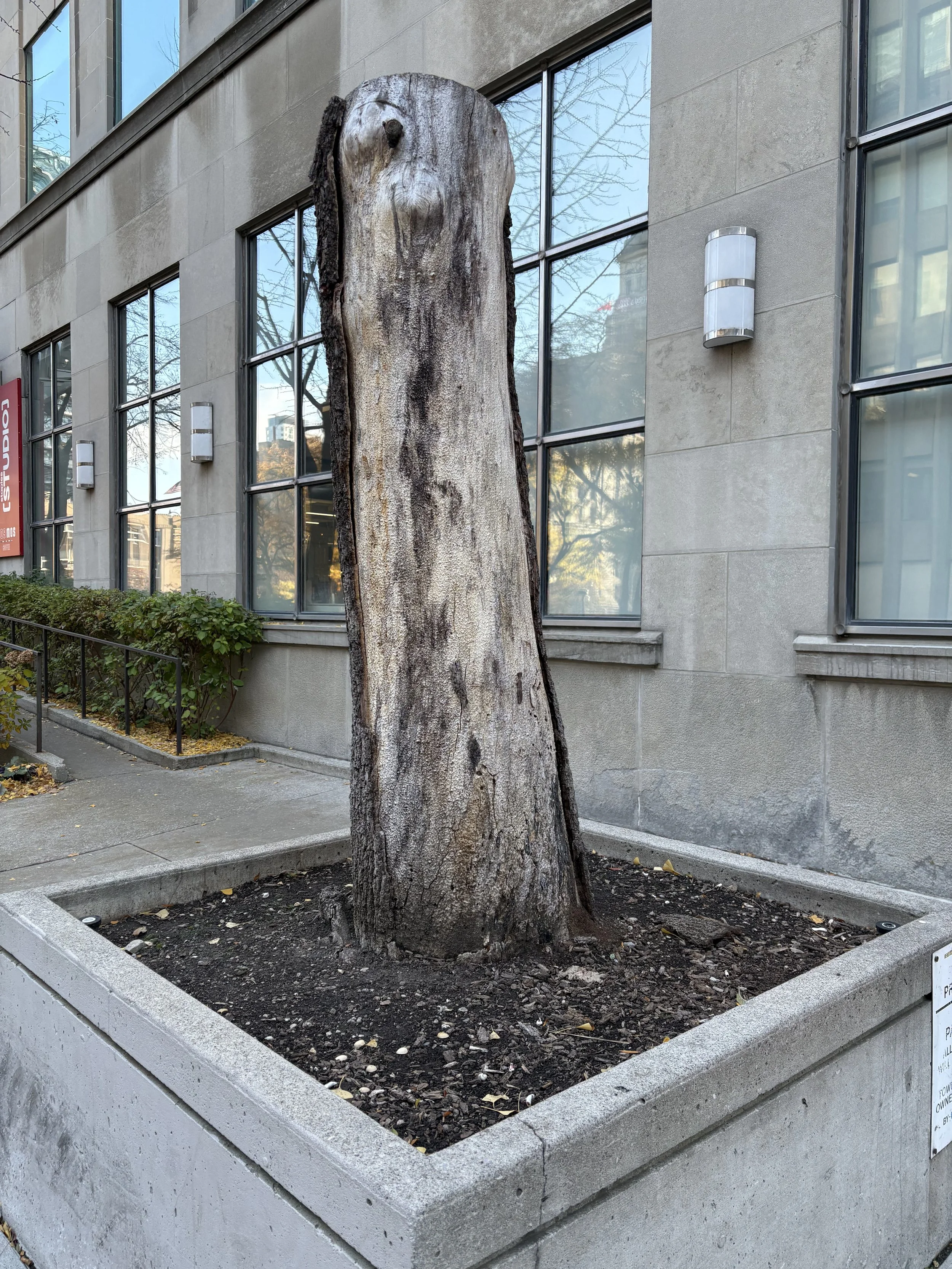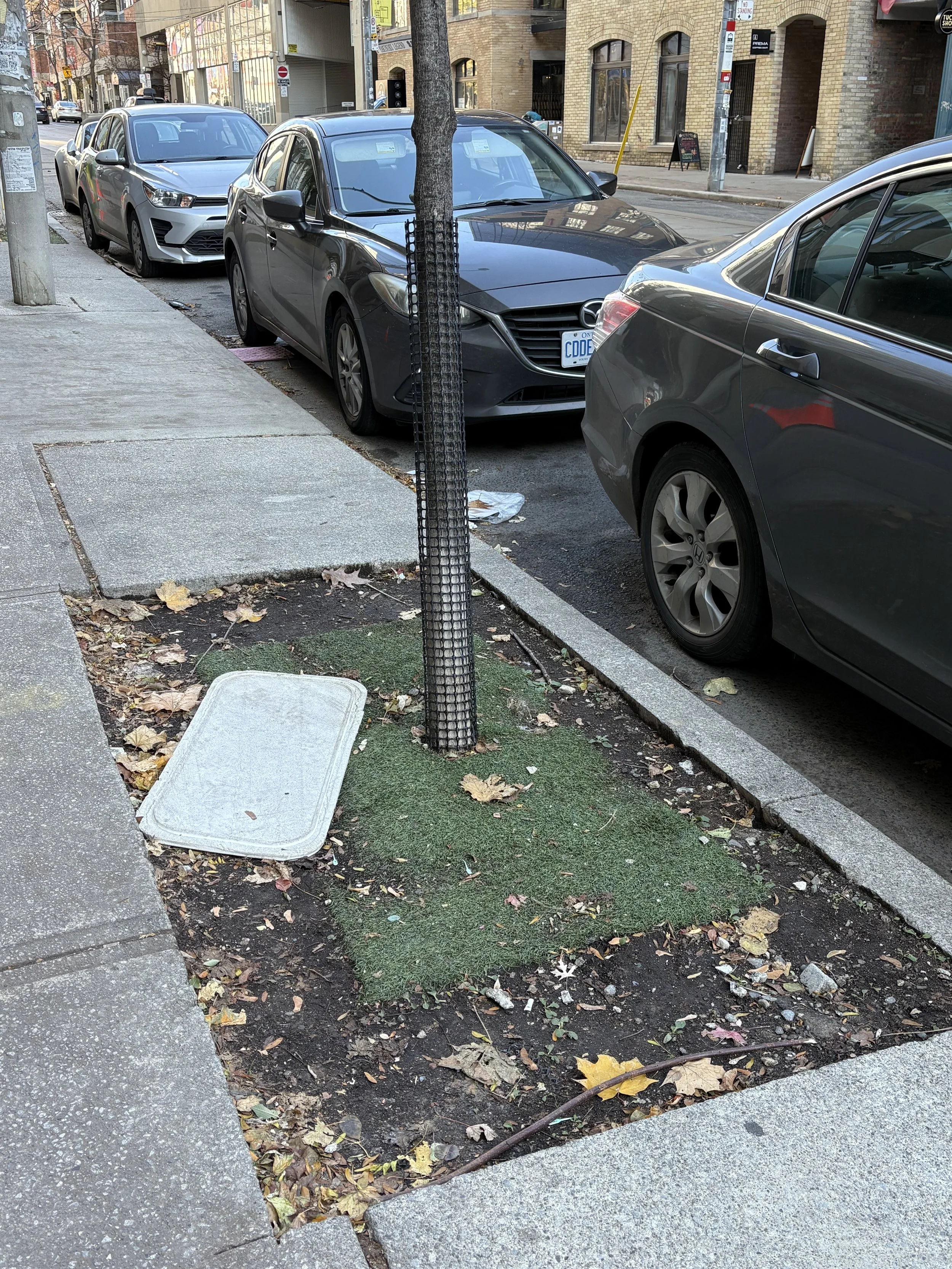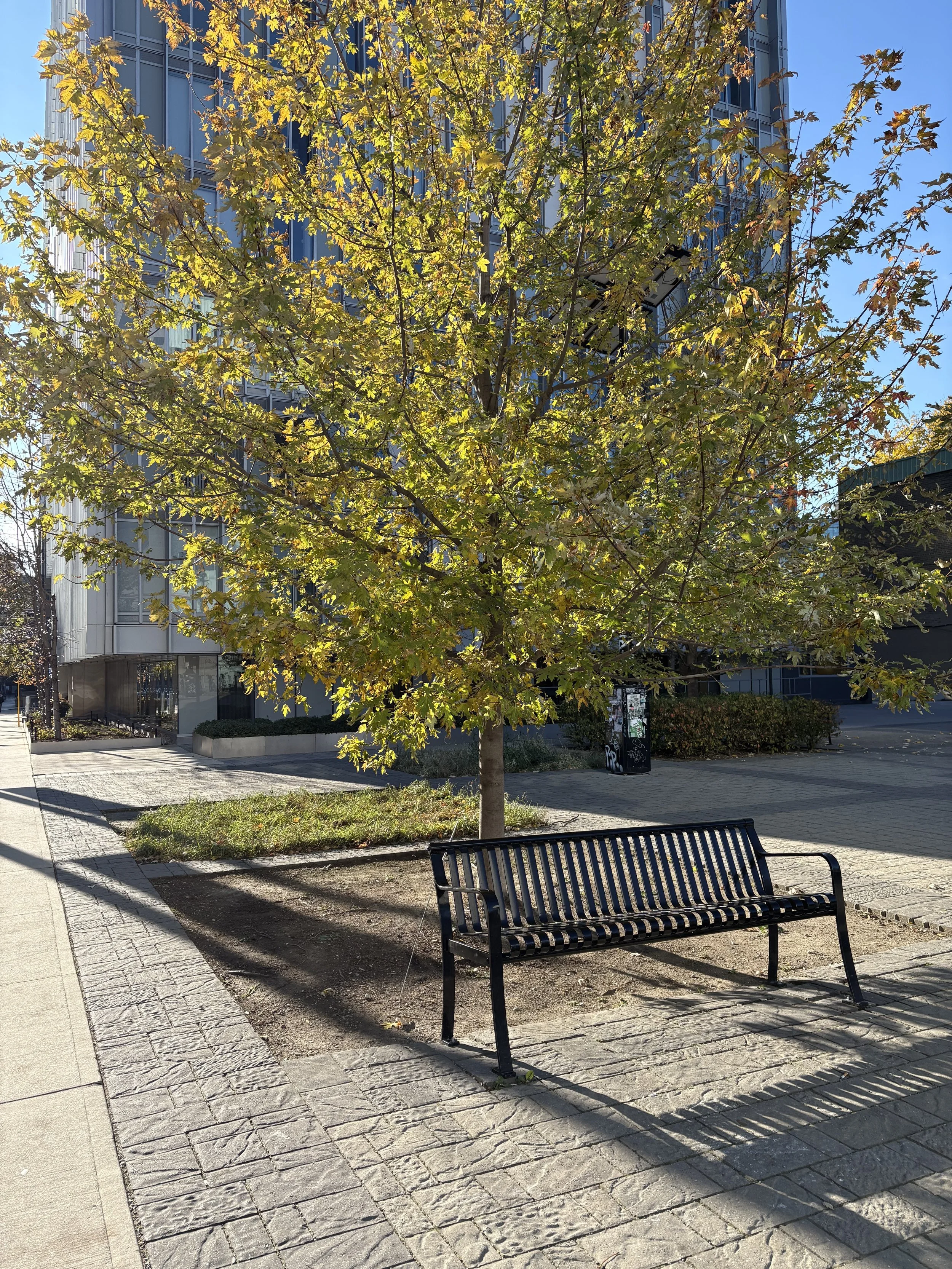Street Trees: Are Urban Heat Islands the Best We Can Do?
Hello gardeners!
Walking through Toronto this past month, I kept noticing the same thing: tree wells full of dust, dog urine, compacted soil, and heat-scorched roots. Street trees that look defeated. Planters turned into ovens. And as someone who loves plants and trees, I keep asking myself — is this really the best we can do?
Urban heat islands are no joke. They’re the result of dark surfaces like asphalt and concrete absorbing solar radiation and releasing it slowly throughout the night. Temperatures in dense city cores can run several degrees hotter than surrounding areas. That extra heat ramps up energy use, worsens air quality, strains public health, and absolutely punishes vegetation.
And here’s the uncomfortable truth: many of our well-meaning “urban greening” strategies aren’t helping as much as we like to imagine.
Take street trees. On paper, they reduce heat, clean air, manage stormwater, and provide habitat. But in practice? Most are planted in tiny pits or concrete planters that bake in summer, flood in winter, and receive almost no irrigation. The soil volume is often a fraction of what a mature tree needs. Trees that should live fifty, eighty, even a hundred years barely make it to ten. When they die, they’re often left standing or pulled out and never replaced — because at that point the infrastructure around them makes replacement “too complicated.”
Tree stump in concrete planter.
Photo: R. Pak
And the biodiversity argument? A street tree barely hanging on in a compacted, polluted, dehydrated tree well isn’t contributing meaningful ecosystem services. A tree in chronic stress produces fewer leaves, supports fewer insects, and provides almost no cooling. The canopy benefits we love to cite — temperature reduction, shade, stormwater capture — depend on healthy trees with actual leaf mass. A struggling stick in a pit isn’t cooling anything.
Street tree well with a partial covering of artificial turf and garbage. Plastic collar around the trunk is protecting it from what?
Photo: R. Pak
Is there a better way forward for city trees?
Landscape architects and city engineers are shifting toward continuous soil trenches, structural soil cells, and green infrastructure corridors that give trees proper rooting space. These allow water, oxygen, and nutrients to move freely underground while supporting sidewalks above. They also integrate stormwater management — directing runoff from streets and rooftops into the soil where trees can use it, instead of sending everything straight into the sewer. Plants placed in these strips may slow pollution contained in the runoff from entering lakes and oceans.
Some cities are also trialing no-planter designs, replacing concrete boxes with shared vegetated strips that cool the ground instead of heating it. Others are using engineered soils, subsurface irrigation, or captured stormwater to keep trees hydrated without relying on municipal water. And in places where trees simply can’t thrive, planners are turning to alternatives like green walls, pocket parks, native shrub masses, or shaded pedestrian corridors.
Tree planted in heavily compacted ground, with exposed roots and no organic matter.
Photo by: R. Pak
From a gardener’s perspective, the issue is painfully obvious: we’re planting trees where they physically cannot succeed and expecting a miracle. Then we use those failures as excuses to do even less.
We can do better. Cities need trees supported by thoughtful infrastructure, soil volume, stormwater capture, and real maintenance.
This is a group of birch trees in a cement planter and the barren area is covered with landscape fabric further reducing the amount of moisture available for the tree.
Photo: R. Pak
As gardeners and nature lovers, we see the difference between thriving greenery and performative greenery. When we travel, we notice. People in urban areas deserve to have healthy trees lining their streets.
Roberta



